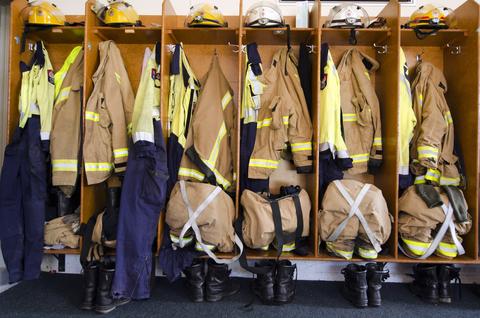The threat of getting burned by flames is a clear danger of firefighting, but other health risks may not be as obvious. As one can imagine, battling flames increases firefighters’ exposure to carcinogens.

Researchers have identified an increased risk among firefighters for many cancers 1 , including non-Hodgkin’s lymphoma, multiple myeloma, prostate, and testicular cancer. The contaminants that permeate a firefighter’s gear is another risk because the skin is highly absorptive.
Off the job, it is also essential to take precautions against exposure. Therefore, it is vital to remove carcinogens and other toxins when possible because there is a false sense of security regarding the significant number of chemicals that are absorbed through the skin. Little steps inside of the fire station can be taken to reduce contaminants, such as removing as many of the products used in furniture that have potential health concerns. How can this be accomplished?
Since the 1970s toxic fire retardants have been used in furniture foam, and approximately 85% of couches made in the United States and bought between 1984 and 2010 contain potentially harmful chemicals 2 . Removing the toxic fire retardants as well as eliminating the use of OSB, fiberboards and other manufactured wood products that have the potential of off-gassing can make a big difference with the challenges of the firehouse environment.
While “firefighter proof” has become synonymous with indestructible, this is not always true. Using products that can help decrease health risks can make a big difference for the firefighters who risk their lives every day.
1 https://www.i-women.org/wp- content/uploads/2014/04/FCSN-report.pdf
2 http://greensciencepolicy.org/topics/furniture/

